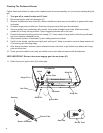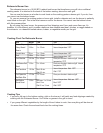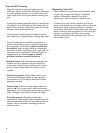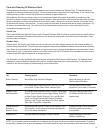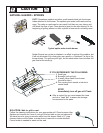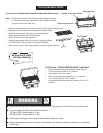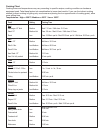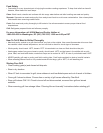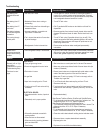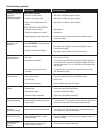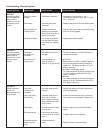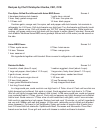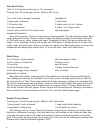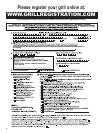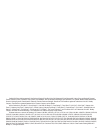Special offers from our partners!

Find Replacement BBQ Parts for 20,308 Models. Repair your BBQ today.

Troubleshooting
Emergencies
Problem
Gas leaking from
cracked/cut/burned
hose.
Gas leaking from LP
tank.
Gas leaking from LP
tank valve.
Gas leaking between
LP tank and regulator
connection.
Fire coming through
control panel.
Grease fire or
continuous excessive
flames above cooking
surface.
Burner(s) will not light
using ignitor.
(See Electronic Ignition
Troubleshooting also)
Continued on next
page.
Possible Cause
Possible Cause
• Old hose, cut in hose.
• Mechanical failure due to rusting or
mishandling.
• Failure of tank valve from mishandling or
mechanical failure.
• Improper installation, connection not
tight, failure of rubber seal.
• Fire in burner tube section of burner due
to partial blockage.
• Misalignment of valve to burner tube.
• Too much grease buildup in burner area.
• Trying to light wrong burner.
• Burner not engaged with control valve.
• Obstruction in burner.
• No gas flow.
• Vapor lock at coupling nut to LP tank.
• Coupling nut and LP tank valve not fully
connected.
• Electrode cracked or broken; “sparks at
crack.”
• Electrode tip not in proper position.
• Wire and/or electrode covered with
cooking residue.
Wires are loose or disconnected.
Wires are shorting (sparking) between
ignitor and electrode.
GAS ISSUES:
ELECTRICAL ISSUES:
•
•
• Dead battery.
Prevention/Solution
Prevention/Solution
• Turn off gas at LP tank or at source on natural gas systems. If
hose is cut or cracked, replace valve/hose/regulator. If burned,
discontinue use of product until a gas service technician/plumber
has investigated cause and correction is made.
• Turn off LP tank valve.
• Call LP gas dealer 800-number on tank label or call local fire
department.
• Remove regulator from tank and visually inspect rubber seal for
damage. Reinstall and check for leaks. Ensure black knob is on
tight.
• Turn off LP tank valve (if possible without injury to self). If fire
cannot be controlled with baking soda/extinguisher, call local fire
department. Remove burner and inspect for spider nest or rust.
Clean using bottle brush.
• Ensure valves and burner tubes are aligned per assembly
instructions.
• Turn off LP tank valve. Leave lid open to allow flames to die down.
After cooling, clean food particles and excess grease from inside
firebox area, grease cup/pan/tray, and other surfaces.
• See instructions on control panel and in Use and Care manual.
• Make sure valves are positioned inside of burner tubes with clips
attached (if featured).
• Ensure burner tubes are not obstructed with spider webs or other
matter. See cleaning section of Use and Care manual.
• Make sure LP tank is not empty. If LP tank is not empty, refer to
“Sudden drop in gas flow.”
• Turn off knobs and disconnect coupling nut from LP tank.
Reconnect and retry.
• Turn the coupling nut approximately one-half to three-quarters
additional turn until solid stop. Tighten by hand only - do not use
tools.
• Replace electrode(s).
Main Burners Traditional Series, QuickSet and QuickSet Series:
• Tip of electrode should be pointing toward tip of collector box . The
distance should be 1/8” to 1/4”. Adjust if necessary.
Main Burners Performance and Advantage Series:
• Tip of electrode should be pointing toward port hole in burner. The
distance should be 1/8” to 3/16”. Adjust if necessary.
Sideburner:
• Tip of electrode should be pointing toward gas port opening on
burner. The distance should be 1/8” to 3/16”. Adjust if necessary.
•
• Reconnect wires or replace electrode/wire assembly.
• Replace ignitor wire.
• Replace with a new AAA-size alkaline battery.
Clean wire and/or electrode with rubbing alcohol and clean swab.
24



